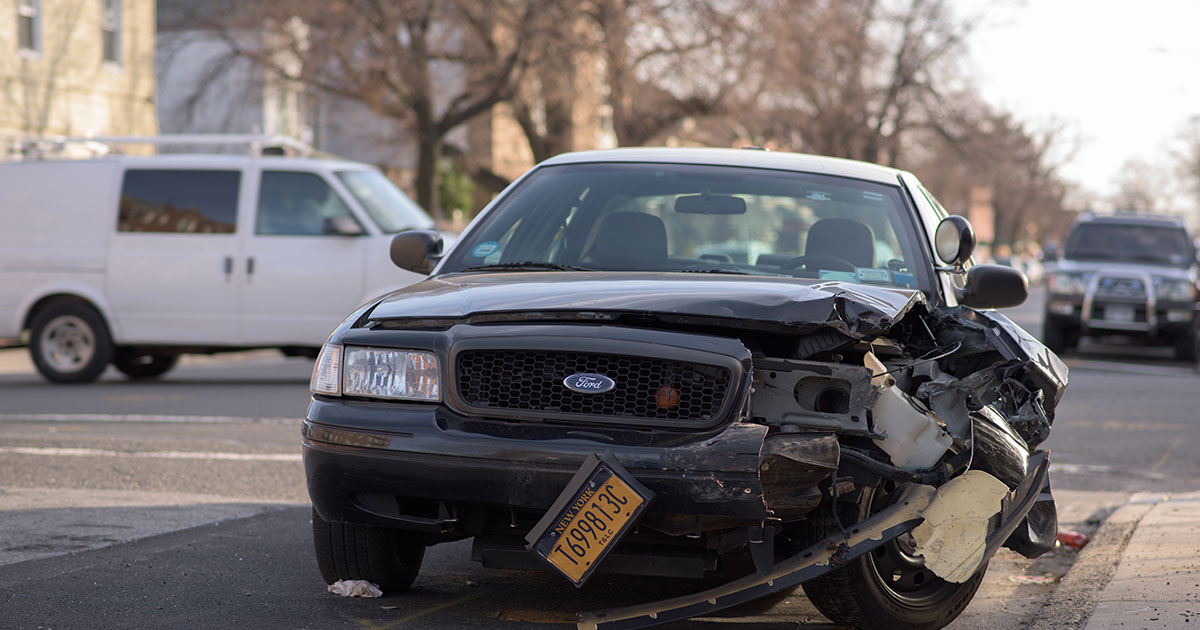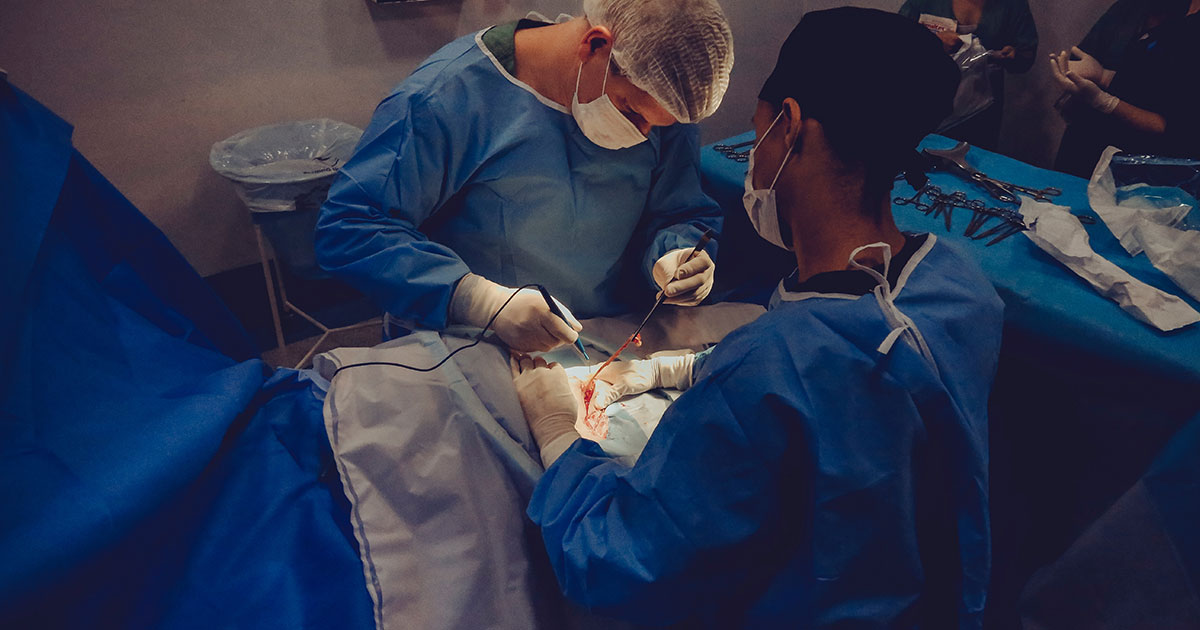
5 Common Causes of Personal Injury Accidents and How to Avoid Them
What Is a Personal Injury Accident?
Personal injury accidents are any type of accident that results in physical, emotional, or psychological harm to an individual due to the negligence or recklessness of another party. This includes car accidents, slip and falls, medical malpractice, dog bites, and workplace accidents.
When these types of incidents occur, the injured party may be entitled to financial compensation for damages such as medical bills and lost wages. A qualified personal injury lawyer can help victims understand their rights and pursue the appropriate legal actions.
By understanding the common causes of these types of accidents and how to avoid them, you can help protect yourself from suffering a personal injury accident.
1. Car Accidents
Causes of car accidents
Aggressive driving is a form of negligent driving that endangers other drivers and pedestrians.
It includes behaviors like speeding, tailgating, running red lights or stop signs, swerving between lanes, passing on the shoulder or in no-passing zones, making illegal turns, and failing to yield right of way.
Aggressive drivers can cause serious accidents that can cause major injuries or even traffic fatalities. Road rage is another form of aggressive driving and can be especially dangerous, as it often involves physical violence or threats of violence.
The National Highway Traffic Safety Administration (NHTSA) reported that 11,258 fatalities were attributed to speeding in 2020. Speed limits exist to ensure the safety of all individuals on the road. It is important to educate oneself on the risks associated with speeding and understand that faster does not necessarily mean safer. [1]

Poor visibility due to inadequate lighting, wet roads, icy roads related to inclement weather, roads in poor condition due to lack of maintenance, and inadequate signage are just a few examples of hazardous road conditions drivers must be aware of at all times.
Everyday, us commuters see fellow drivers on their smart phones … in plaint sight. Distracted drivers are responsible for more than 1,000 injuries and nine deaths per day in the US.
Distracted driving refers to any activity that causes a driver to lose focus on the road, including actions like texting, eating, grooming, reading maps, and using navigation devices.
Involving yourself in distracting activities when driving can reduce your reaction time and this often results in rear end collisions and other accidents.
Drunk drivers and people driving under the influence of drugs pose a serious threat to everyone on the roads. According to the Centers for Disease Control and Prevention, 28 people die every day in the U.S. as a result of drunk-driving crashes.
Intoxicated drivers have slower reflexes and poor judgement, making them more likely to cause an accident. Alcoholic or mind-altering drugs as well as some anti-anxiety drugs cause drivers to be disoriented and make them less likely to pay attention to their surroundings, increasing the risk of an accident.
Drowsy driving is another major cause of accidents and is responsible for more than 100,000 crashes every year. Drowsiness impairs our reaction time, alertness and coordination, making it difficult to respond quickly in an emergency situation.
When drivers are fatigued from lack of sleep or long hours on the road, they can easily fall asleep at the wheel and cause serious personal injury accidents.
Poor vehicle maintenance can also contribute to accidents by causing brakes to fail, tires to blow out, loose parts, and other mechanical failures that can cause a crash.

How to Avoid Car Accidents
No one wants to be involved with an accident claim, so it is important for drivers to be aware of their own behavior behind the wheel and always obey traffic laws. For safe driving, it is recommended for drivers to refrain from distractions like texting while driving and to never operate a vehicle under the influence of drugs or alcohol.
Drivers should prioritize situational awareness and exhibit courtesy towards other drivers by keeping a safe following distance.
One way to reduce the risk of being involved in an auto accident due to poor road conditions is by practicing defensive driving.
Defensive driving involves staying alert and aware of your surroundings, making sure you are following all applicable laws, and being prepared for any potential hazards. Allow for a generous following distance between vehicles at all times. Avoid driving in bad weather or in areas with poor visibility when it can be avoided.
Drivers should also be aware of their own speed and adjust accordingly based on the road conditions. When navigating around curves or hills, drivers should reduce their speed as they may not be able to see what is ahead due to blind spots.
When it comes to traffic laws, always obey posted signs and signals, such as stop signs or red lights. Only pass vehicles in marked passing zones and avoid passing vehicles when visibility is limited.
If an auto accident does occur, it is important to involved the auto insurance carrier and review the applicable auto insurance policy.
2. Slip and Falls
Fall accidents are especially concerning in older adults. According to the Centers for Disease Control and Prevention, over 800,000 Americans are hospitalized each year for fall injuries, with head injuries and hip fractures being the most common injuries. People who fall often become fearful of falling, which may cause them to be less active. A lack of physical activity can lead to a cycle of weakness and increased risk of falling.
Causes of Slip and Fall Accidents
- Slippery floors or wet floors
- Uneven surfaces such as cracked sidewalks, potholes, or uneven flooring can cause trip and fall accidents.
- Poor lighting in a workplace or public area can make it challenging to see obstacles or uneven surfaces, increasing the risk of a slip and fall accident
- Wearing the wrong type of footwear can also contribute to slip and fall accidents. High heels, shoes with worn-out soles, or shoes without slip-resistant soles can make it challenging to maintain balance and traction.
How to Avoid Slip and Fall Accident
Many of these accidents can be prevented by taking some simple measures. One of the best ways for active people to avoid slip and fall accidents is to wear shoes with good grip on the sole, especially during wet weather.
It’s also important to be aware of the surroundings and watch out for any potential hazards like uneven ground, loose carpets, or spills. Handrails on stairs and walkways provide security and using a walker or cane unsteady at baseline is always recommended.
People should use extra caution and allow ample time when walking in a poorly lit environment or where lighting is dim.
Taking these measures can help individuals avoid slip and fall accidents and keep themselves safe from potential injuries. It’s important for everyone to be mindful of their surroundings and take steps to avoid slips, trips, and falls to ensure a safe and healthy environment.
3. Medical Malpractice
Causes of Medical Malpractice
Medical malpractice can occur when doctors, nurses, or other medical professionals fail to provide adequate care to their patients, leading to injuries or medical complications.
There are several common causes of medical malpractice, including misdiagnosis, errors during surgery or treatment, and medication errors. Miscommunication between healthcare professionals or between patients and their providers can also result in malpractice.
In some cases, medical malpractice may be caused by negligence, inadequate training or supervision, or lack of proper equipment. Certain medical conditions or diseases may also increase the risk of malpractice.
When a person goes to the clinic or hospital, they tend to go for a healing experience, but due to medical malpractice, sometimes a patient does not find a safe environment, but rather a dangerous one.

How to Avoid Being a Victim of Medical Malpractice
Medical malpractice can be a serious issue, and it can have long-lasting effects on a patient’s health and wellbeing. There are several things that patients can do to reduce their chances of becoming a victim of medical malpractice.
One of the most important steps is to choose a trustworthy and experienced healthcare provider. Patients should research their provider’s credentials, experience, and reputation before choosing them as their healthcare provider.
Before any medical procedure or treatment, patients should also ask questions and make sure they understand the risks and benefits involved. They should also be sure to communicate clearly with their healthcare provider about their health history, symptoms, and concerns.
Patients should also be sure to get a second opinion in case of complex medical conditions or procedures. Keeping accurate records of one’s medical appointments and procedures, can also be helpful in case of medical malpractice.
Keep track of any medications, supplements, or treatments a patient is taking and share this information with their healthcare provider. In case of a medical malpractice incident, patients should seek legal advice promptly and document their experiences carefully so that they can build a strong case.
By taking these steps, patients can reduce their chances of becoming victims of medical malpractice and protect their health and wellbeing.
4. Dog Bites
Causes of Dog Bites
In the United States , dog bites are one of the most common causes of personal injury. According to the Centers for Disease Control and Prevention (CDC), approximately 4.5 million people are bitten by dogs each year in the United States.
Some of the most common causes for dog bites include approaching an unfamiliar dog, disregarding warning signs from a dog, playing rough with a pet, and not properly securing a pet .
Dogs may also be more prone to biting when they are in pain, threatened, or provoked. Furthermore, certain breeds of dogs may be more likely to bite than others.

Dog bites can be a serious issue, resulting in injuries or infections that can have long-lasting effects on a person’s health and wellbeing.
There are several common causes of dog bites, including aggressive behavior, fear, or stress. In some instances, dogs may become aggressive due to a genetic predisposition, but many incidents of dog bites occur due to environmental or learned behaviors.
Very young or older dogs that have not received proper socialization training may be more susceptible to anxious or aggressive behavior. Dogs that have been abused or neglected may exhibit aggressive tendencies.
Certain situations or stresses can also contribute to aggressive behavior for dogs. For example, a dog may be more likely to bite if it perceives a stranger is too close to its owner or chew toy. Male dogs that have not been neutered may be more prone to aggression as well.
Tips for Preventing Dog Bites
Preventing dog bites is an important issue for all communities. There are several steps that pet owners and communities can take to reduce the risk of dog bites.
One of the most important steps is socialization. Dogs should be socialized from a young age to be comfortable with different people, animals, and environments. Proper socialization can help prevent aggressive behavior and reduce the risk of dog bites.
Another important step is training. Dogs should be trained in basic obedience and manners, including responding to commands such as “sit,” “stay,” and “come.” This can help ensure that dogs are well-behaved and less likely to react aggressively in stressful or unfamiliar situations.
Owners should also be responsible for their dog’s behavior and care. This includes properly controlling and supervising their dog, keeping them up-to-date on vaccinations and preventative treatments such as tick and flea medication, and providing them with adequate nutrition, exercise, and attention.
Communities can also take steps to prevent dog bites by education and enforcing local laws and regulations related to pet ownership. This includes enforcing leash laws, providing adequate signage in areas where dogs may be present, and educating children on dog safety.
Animal control agencies can also implement programs focused on responsible pet ownership and provide resources for pet owners to help them care for their pets properly. By taking these steps, communities can work together to reduce the risk of dog bites and create a safer environment for both humans and animals.
5. Workplace Accidents
A workplace accident is an unexpected and unplanned event that results in harm or injury to an employee or multiple employees while on the job.
These accidents can occur in any workplace, including offices, factories, construction sites or any job site. Workplace injuries can cause minor injuries like cuts, bruises, and sprains, or even extremely severe injuries like burns, fractures, and amputations or in worst cases, death.
Causes of Workplace Accidents
One of the most common causes of workplace accidents is human error. Workers may not pay attention to their surroundings, or may make a mistake or an incorrect judgement, putting themselves, their colleagues, or the workplace at risk.
Another cause is unsafe working conditions. This can include situations such as poorly lit spaces, dangerous machinery, or a lack of proper ventilation.

Machinery and equipment malfunctions are other frequent causes of workplace accidents. If equipment is faulty or not properly maintained, it can lead to serious injuries or even death.
Proper maintenance and inspection of equipment and machinery, as well as providing safety training for employees are some ways for decreasing the risk of workplace accidents. Chemical and biological hazards can also pose major risks in some workplaces.
Accidents like fire or explosions can happen, too. Workplace fires can occur due to faulty electrical systems, smoking or cooking in areas that are not authorized, or flammable materials or chemicals that are not properly stored.
Transport accidents, like falls from heights, slip and falls, or even road accidents while travelling to or from work may lead to accidents as well. Injured workers may need immediate medical attention.
How to Avoid Experiencing a Workplace Accident
Avoiding workplace accidents is crucial to ensuring the safety and wellbeing of employees. There are several steps that can be taken to reduce the risk of workplace accidents.
The first and most important step is to follow all safety rules and protocols set forth by your employer. This includes wearing protective gear when necessary, such as hard hats, safety glasses, and gloves, using equipment correctly, and observing proper lifting techniques. It’s also important to report any unsafe working conditions or hazards to management immediately.
Another key factor is to receive proper training and education. Employees should be trained in proper procedures for operating equipment and handling hazardous materials. It’s also important to maintain good communication with coworkers and supervisors, especially when working on projects that require teamwork.
Regular breaks and time off can also be helpful in preventing accidents by limiting exposure to harmful materials and reducing fatigue. Proper ergonomics can also play a role, such as having appropriate furniture and sitting or standing at the appropriate height.
Staying healthy and fit can also reduce the risk of accidents and increase overall wellness. By following these steps, employees can create a safe working environment that promotes wellness while reducing the risk of accidents and injuries.
When dealing with any personal injury situation, medical expenses can add up and sometimes property damage also occurs (such as in a car accident). Filing a personal injury claim with a qualified personal injury attorney can help you seek justice and receive financial compensation for your losses.
Shook & Stone is a Las Vegas personal injury law firm with years of experience in helping victims recover from their injuries and get the compensation they deserve. Contact us today at 702-570-0000 for a free case evaluation, and let us help you put your life back together.
[1] Speeding | NHTSA. (n.d.). NHTSA. https://www.nhtsa.gov/risky-driving/speeding
 Sunny
Sunny 10 Most Dangerous Jobs for Personal Injury Accidents
10 Most Dangerous Jobs for Personal Injury Accidents 